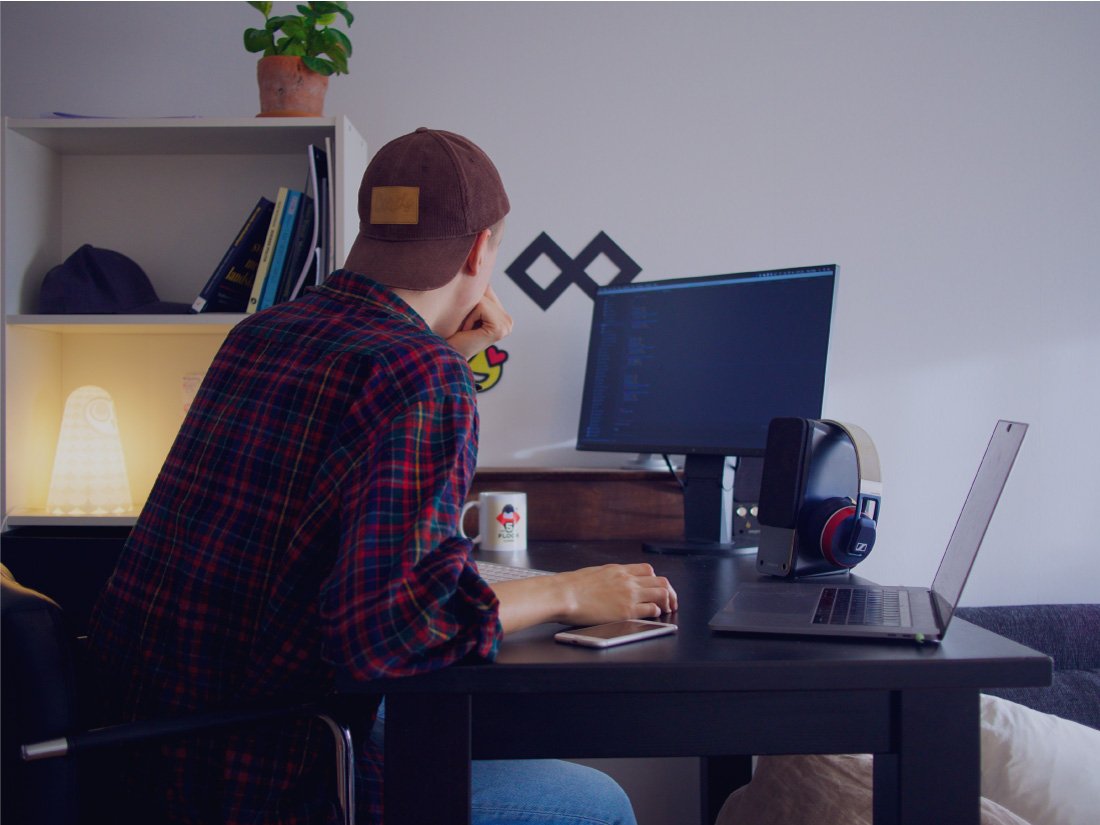We’ve all been there as freelancers. You sit down at your kitchen table to do some work when you realise you haven’t put the trash out and there’s a forgotten load of wet washing in the machine. Half an hour and two chores later, you sit back down when your phone buzzes with social media notifications that just can’t wait.
At the end of the day, you look back and wonder where the hours have gone and how you managed to be so unproductive. While working from home has shown to increase productivity in some people, it’s also much easier to get distracted. Here are five tips to create more structure and routine to your workday at home.
1. Create a designated workspace
The kitchen table only works as a desk for a few days, really. If you regularly work from home, do your spine a favour and invest in an ergonomic setup. Ergonomic experts suggest adopting a work posture, either sitting or standing, where you have a 90-degree bend in your arms to your keyboard, shoulders down, looking straight at your screen instead of at a downward angle.
If you have enough room in your home to have a separate workspace, take it and make it your own. Set up a desk with a comfortable chair, preferably in front of a window with filtered light to avoid strain on your eyes from glare (it will also do your complexion a favour during video conferences). Add a plant or two (turns out they make us happier and more productive), and make the space comfortable and calming to work in. Set up speakers if you prefer to listen to music while working, or invest in sound-blocking headphones if you prefer dead silence.
2. Get “ready for work” in the morning
Create a morning ritual to set the tone for the day before “commuting” to your desk. Have your cup of coffee or tea, make your bed (you’ll be more productive during the day if you do), get dressed and set a time to be at your desk. One study shows that the way we dress impacts our mood, so even if you prefer to work in your pyjamas, perhaps give wearing work clothes at home a go for a change and see how you feel.
It might help to put together a basket or bag of work-related items that you can carry to your workspace - whether that’d be the kitchen table or an office - to clearly define the start (and end) of your workday. Set a firm finishing time: close your laptop, put your to-do list on hold until the next morning and allow yourself to relax for the rest of the evening. Going for a walk or doing some exercise after you’ve finished work might help to transition into leisure time.
3. Set up a work schedule and stick to it
Research shows that 29% of remote workers say they struggle with their work-life balance, and 31% say they have needed to take a day off for their mental health. Working from home is great for the flexibility and freedom it offers (not to mention the lack of commute), but remote workers are also more prone to burnout. Do yourself and your health a favour: agree with yourself on your hours of work and stick to them.
If you’re struggling to get through your daily to-do lists, perhaps prioritise tomorrow’s tasks either before you sign off for the day or before you start work in the morning. That way you know you’ll have enough time to get the most important things done, and you won’t feel guilty for not being able to get to everything on your list (or worse, working through the evening to get them done).
4. Implement a productivity technique for focus
Another effective way to stay productive during the day is to take breaks. It’s easy to forget to get up and move when you’re home alone without interruptions from colleagues. The Pomodoro Technique is a method you can use to work efficiently and focused for short amounts of time. With the Pomodoro Technique, you break your workday into 25-minute blocks, with five-minute breaks in between. You take a longer break of 15-20 minutes after four 25-minute blocks. So for instance, you could work until mid-morning, take a coffee break, work until lunch, have a bite to eat, work until mid-afternoon, go for a 30-minute walk, and finish the day with your last four Pomodoros (4x 25 minutes) before dinner.
5. Use productivity tools
There’s a ton of tools out there to help you stay on track during the day. From time trackers such as Clockify and Toggl, to collaboration and project management tools such as Trello and Microsoft Teams, there’s a tool for every need. A little bit of research into the different options (and whether they’re free or not) will help you decide which one you might benefit from. If you find yourself easily distracted by the internet and social media, you can set up browser blockers such as StayFocusd or Limit (both Chrome extensions). Once added, you can set time limits on different sites or block them altogether. There are also several apps for iPhone or Android that feature Pomodoro timers so you don’t have to keep track of the minutes manually.
To wrap up
Working from home has many benefits, but there are also pitfalls to avoid. Without colleagues and bosses around to tell you to take a break or go home, you’re in charge of making sure you find a work-life balance that works for you. Structuring your day with the tips above will help you be more productive and focused on your work.
We’ve got more guides, tips and tricks on freelancing (and tax) on our blog and great interviews and articles on The Leap.
Share on:
